The first week of September started well, with a few heavy though not prolonged showers providing some much-needed moisture to sustain the cemetery wildlife.
September contains the first day of Autumn, regardless of what day Autumn begins, be it the 1st (meteorological) or the 23rd (astronomical). There were already plenty of fallen leaves carpeting the ground at the start of the month – these had already started to fall in August due to the hot dry weather of that month. This is known as a “False Autumn”, where the trees relinquish their leaves early in order to save water.
Flowers and Plants
That rain arrived not a moment too soon, and the grass verge alongside the cemetery on Spring Bank West is green again. Dandelions have reappeared together with some similar looking but smaller yellow flowers – Autumn Hawkbit and Cats-ear.
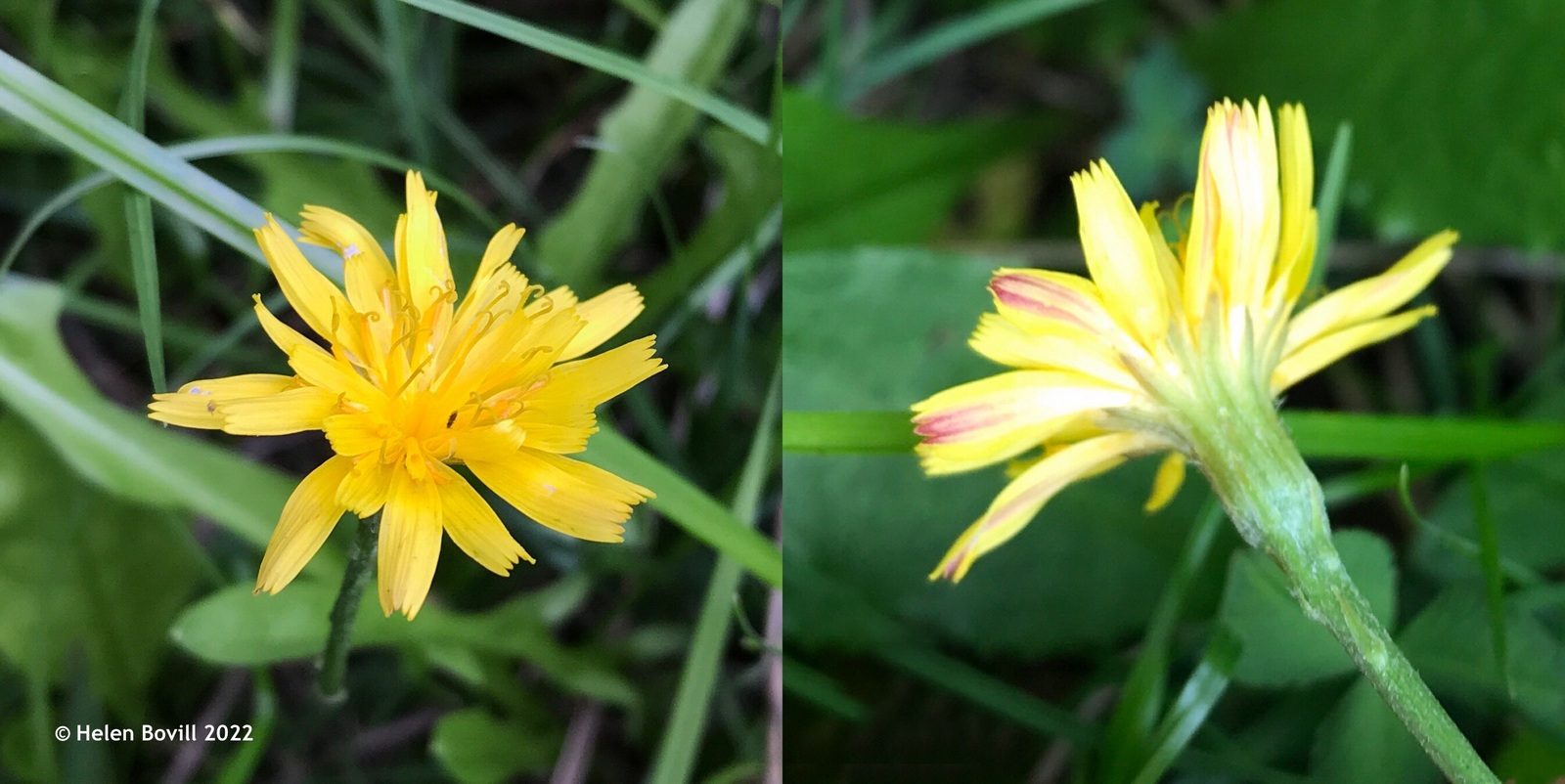

The two plants look very similar, but the Hawkbit has red markings under the petals and smooth leaves. Cat’s-ear has hairy leaves. The Ragwort is also flowering again, and I found some Hedge Mustard and Wood Avens – both have tiny yellow flowers.
I didn’t find many plants in flower this month. Most of the ones I found have yellow flowers but I did find some Common Hogweed and Daisies (white flowers) and some Cyclamen.
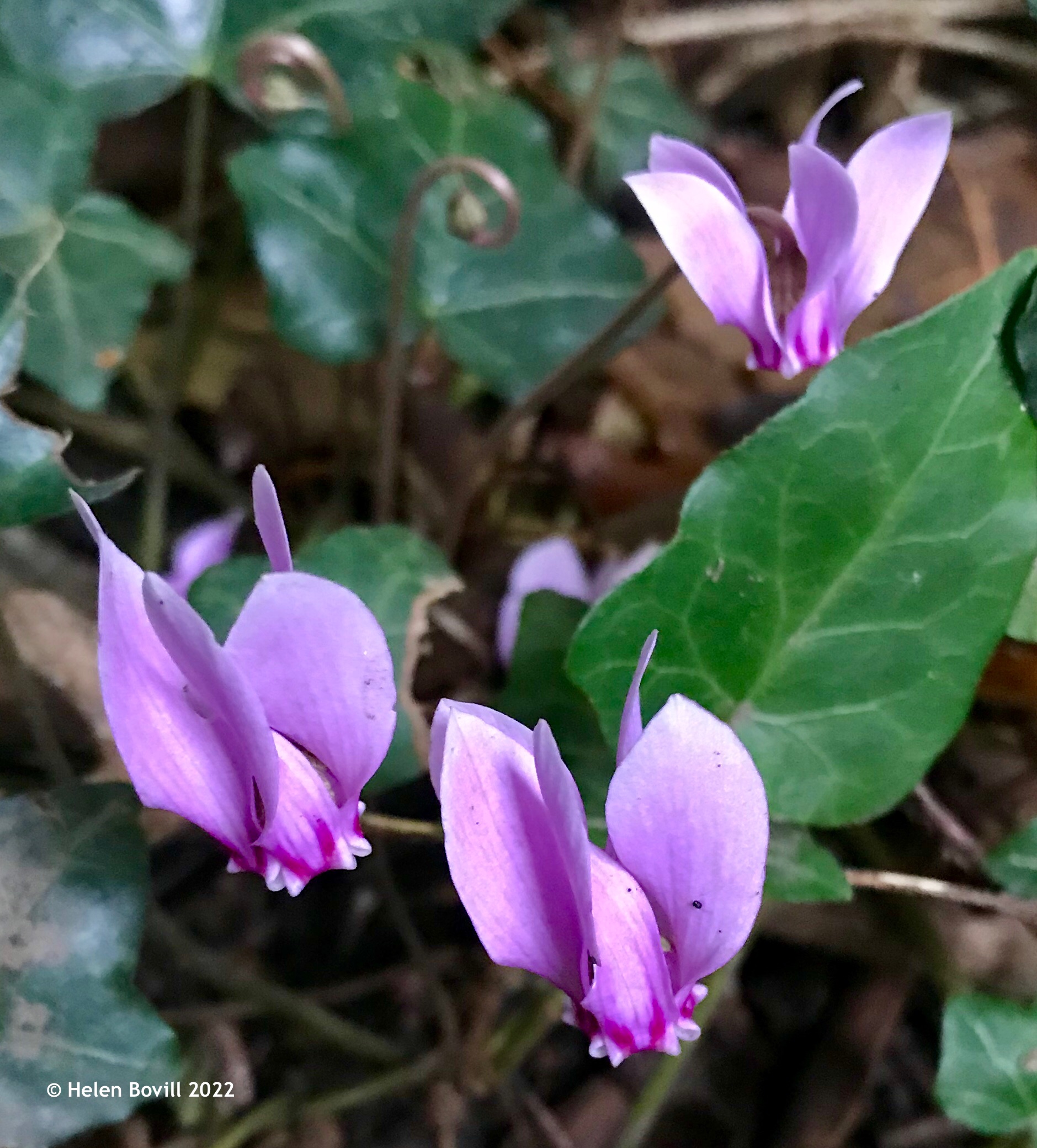
I also found some Oxalis on one of the footpaths in the cemetery, but just a few leaves and no flowers.
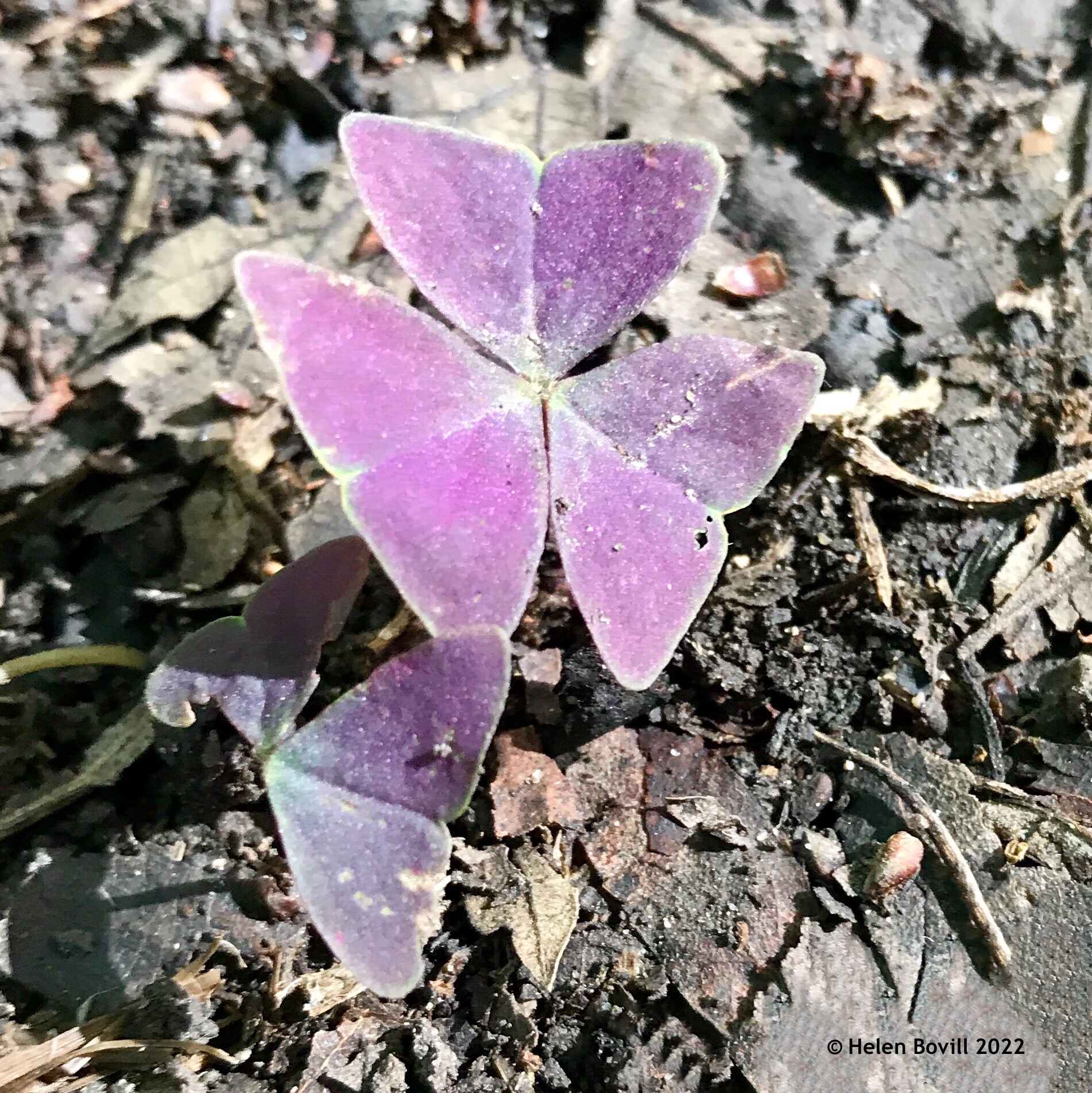
Lots of the trees and shrubs in the cemetery now have berries on them – a great source of food for the cemetery wildlife. In the Quaker Burial Ground the Yew trees have produced lots of berries.

Walking past there towards Western Cemetery, the Broad-leaved Whitebeam at the end of the path has lots of orange berries on it.
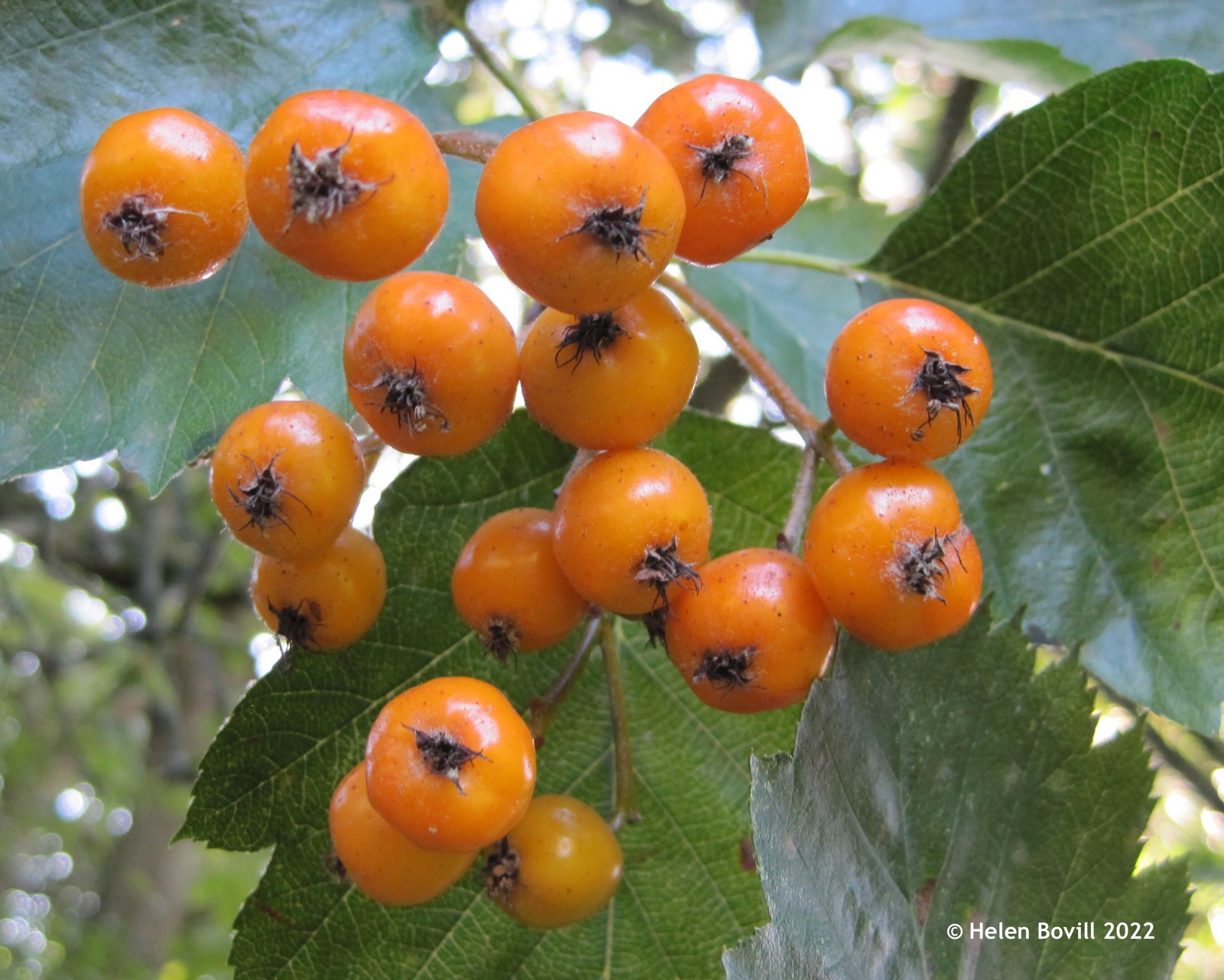
The naturalised Rose bushes inside the Cemetery have some fruits or hips on them.

The Blackthorn has some berries too, although I only found them as either singles or growing in groups of two or three.
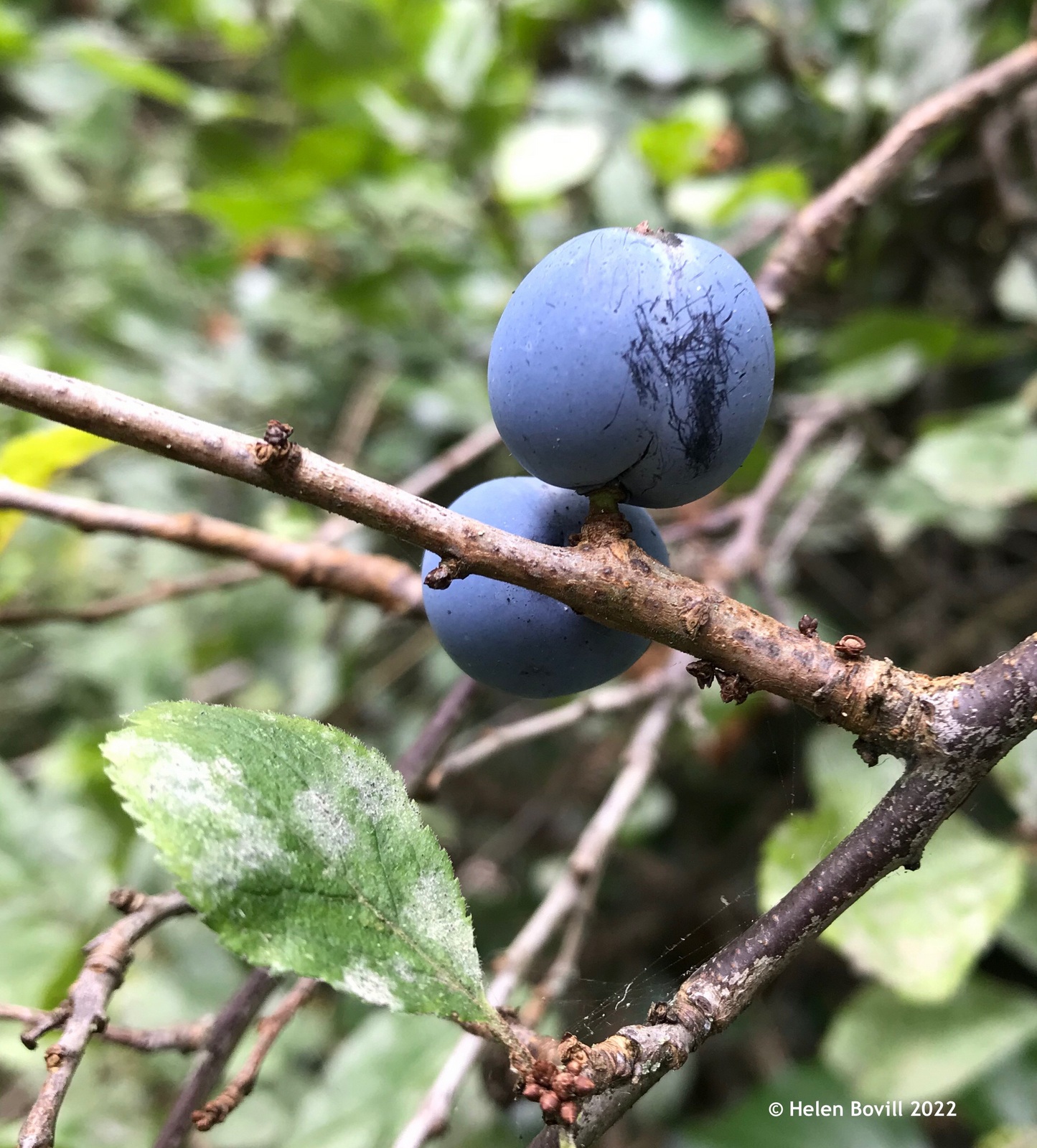
Many of the Bramble plants fruited quite early but there are still some fruits at all stages of ripening on the plants, including some uneaten fruits. The seeds inside those fruits are still very useful to birds such as Bullfinches. The Dogwood bushes have plenty of black berries on them – a particular favourite of Wood Pigeons and Blackbirds it seems.
Birds
This month I’m going to feature those members of the Corvid family that can be found in the Cemetery, namely Carrion Crows and Magpies. There are several of each to be seen. Both make a particularly loud cawing noise, sometimes an indication of a predator lurking nearby.
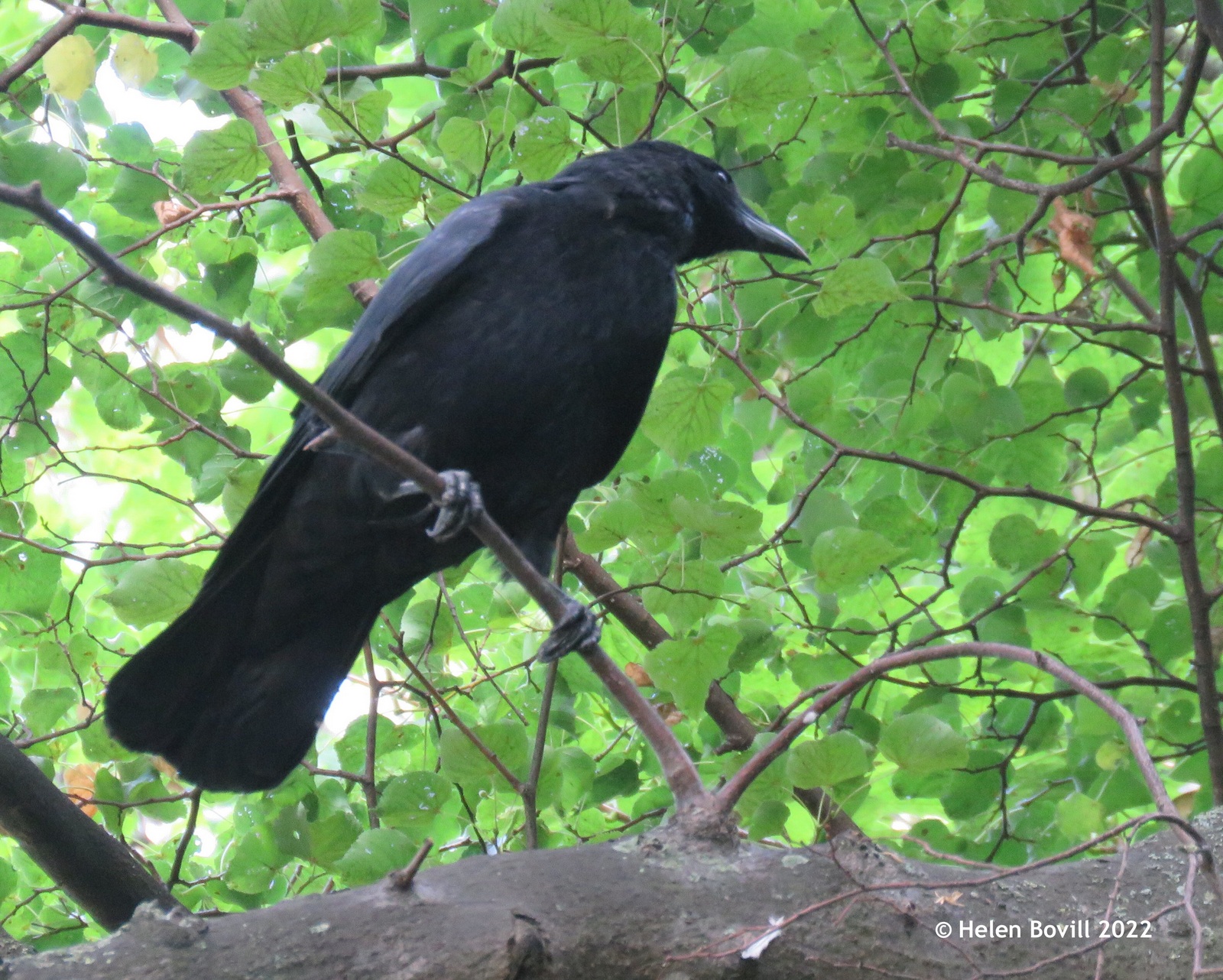

The Corvid family also includes Rooks, Ravens and Jays. I’ve never seen any of these in the Cemetery but a couple of Jays have been seen in the adjoining Western Cemetery by a visitor a few months ago.
The usual smaller birds are around in good numbers – Blackbirds, Chaffinches, Goldfinches, Blue Tits, Great Tits, Robins and Wrens. I also saw a Coal tit – usually I see a couple of them most days but I haven’t seen any for a few weeks, so it was nice to finally see one again. I also caught brief glimpses of a Blackcap and a Treecreeper.
Insects
And now a first for the Cemetery – a Southern Oak Bush-cricket. These are relatively new arrivals to the UK, the first records being in the south of the country in 2001. They’re expanding northwards, and this could be one of the most northerly sightings so far. They’re usually found high up in the tree canopy but also appear in lower shrubs. This one is a female.
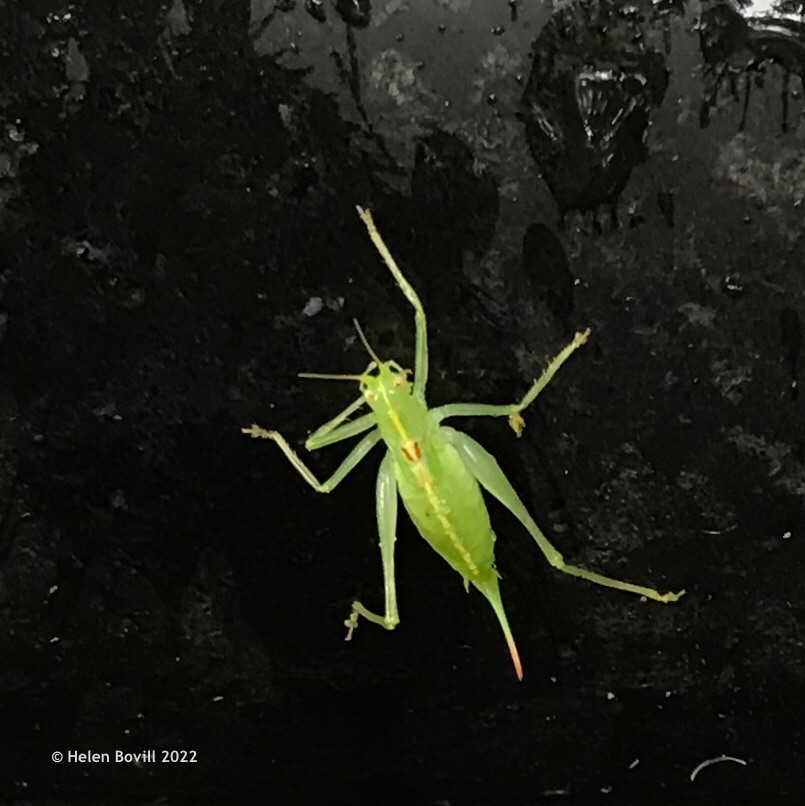
There are still a few Butterflies around – I saw a Red Admiral near the Cholera Monument, and a Small White along the grass verge. The species I’ve seen most often though is the Speckled Wood, often flying high up in the trees and then coming to rest on the ground.
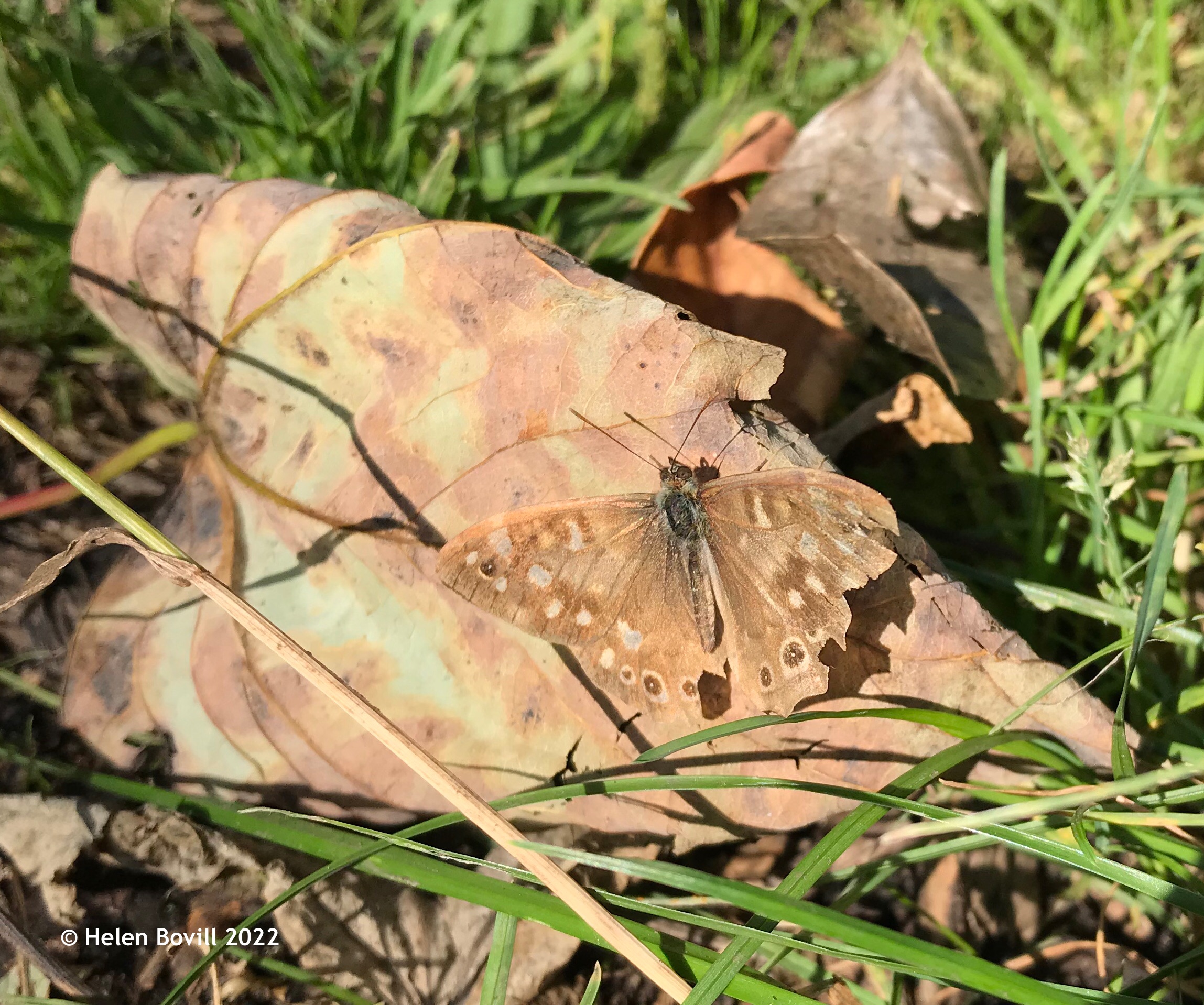
There are still plenty of Ladybirds around, both native and Harlequin. I found quite a lot on the sunny sides of headstones as well as on the vegetation. This 7-Spot is one of our native species.
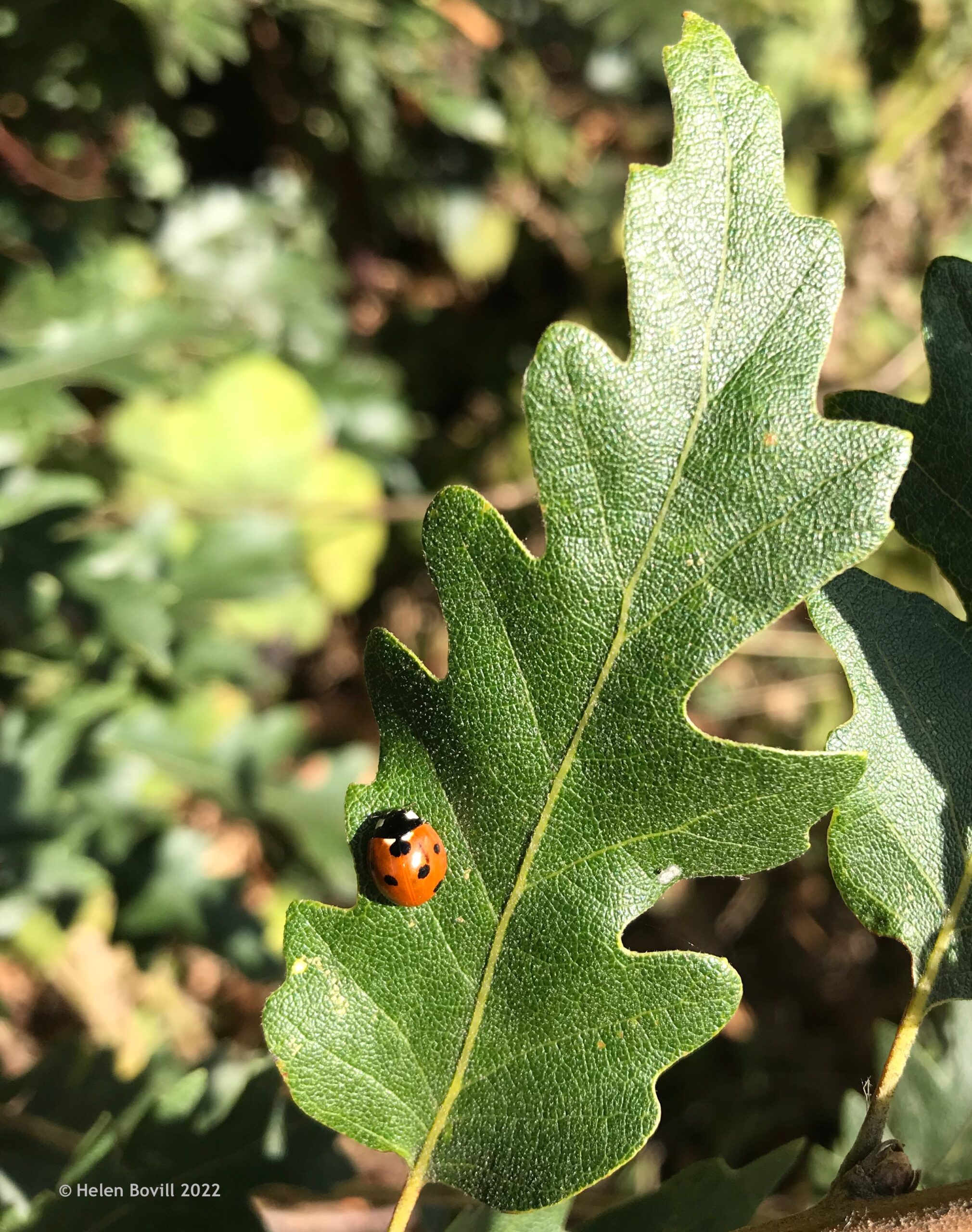
I’m also still seeing hoverflies, including this Common Banded one.
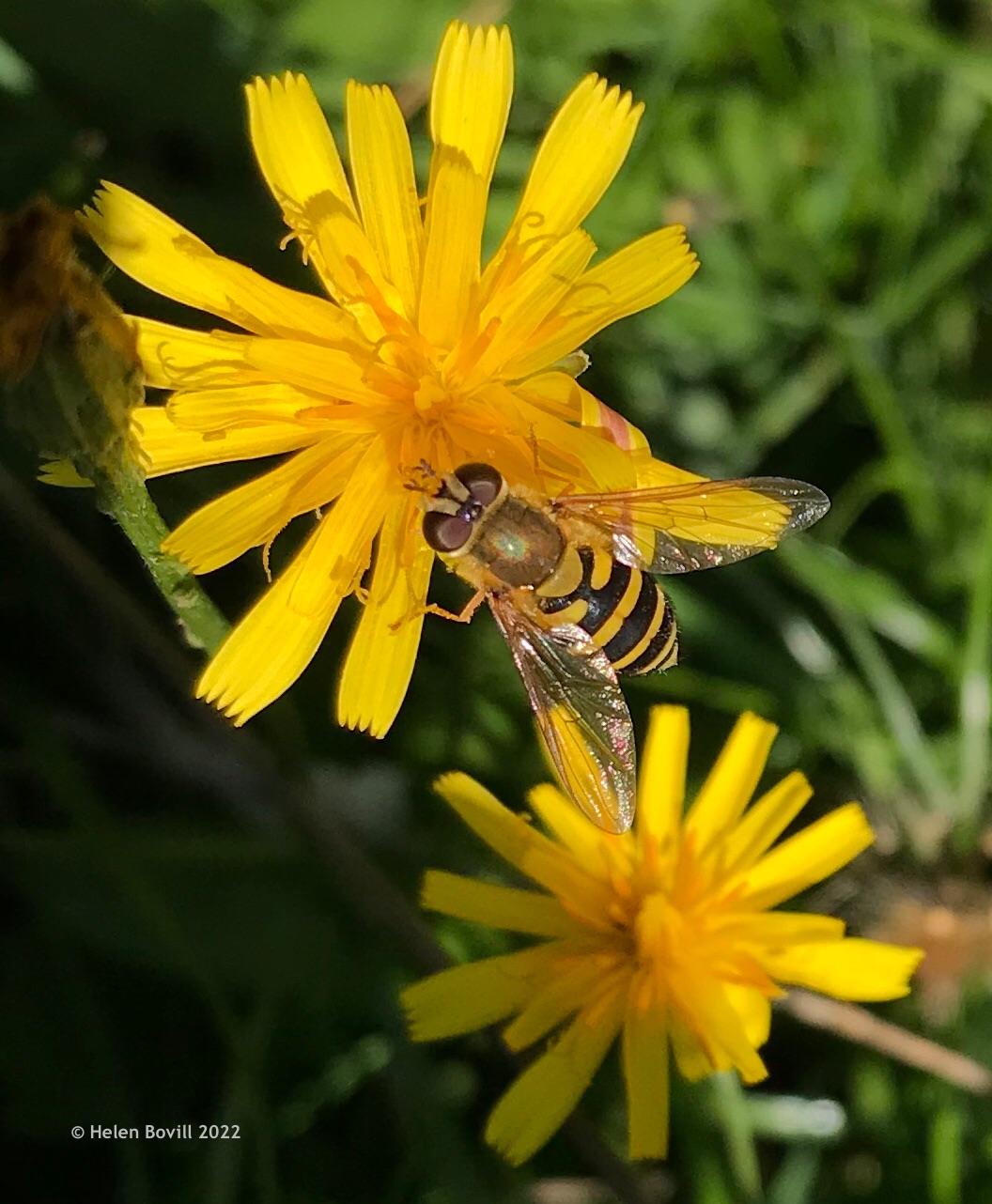
Mushrooms
I found this interesting mushroom growing on a grave – it’s a type of Bolete. It started off larger and paler than in the photo and now it’s shrivelled to a much smaller size. Parts have been eaten by the cemetery wildlife too.
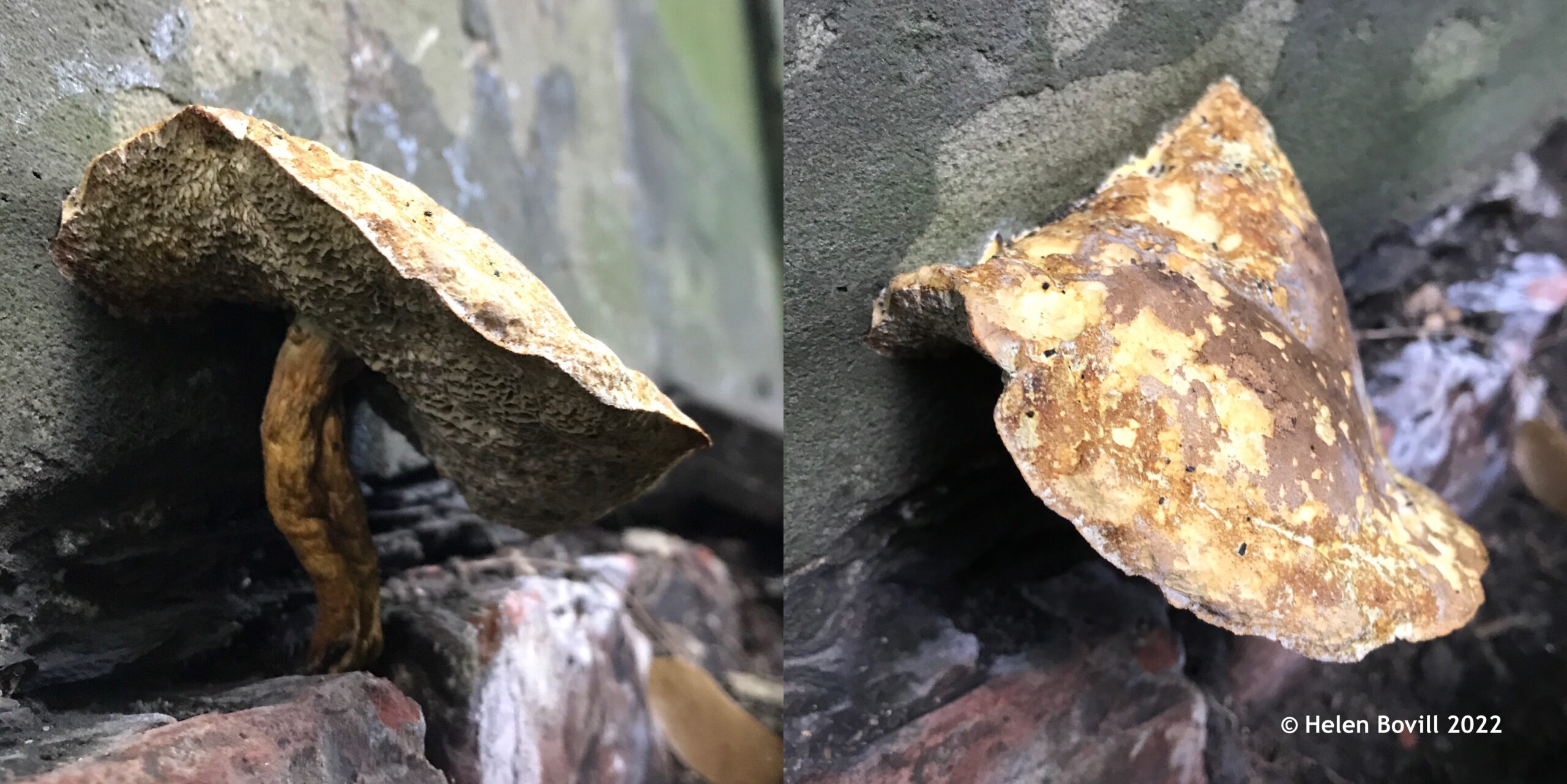
There are quite a number of mushrooms in the cemetery at the moment. They can be quite difficult to identify accurately as their appearance can change quite quickly. This one started off smooth on top, and now it has its own fungus on it!
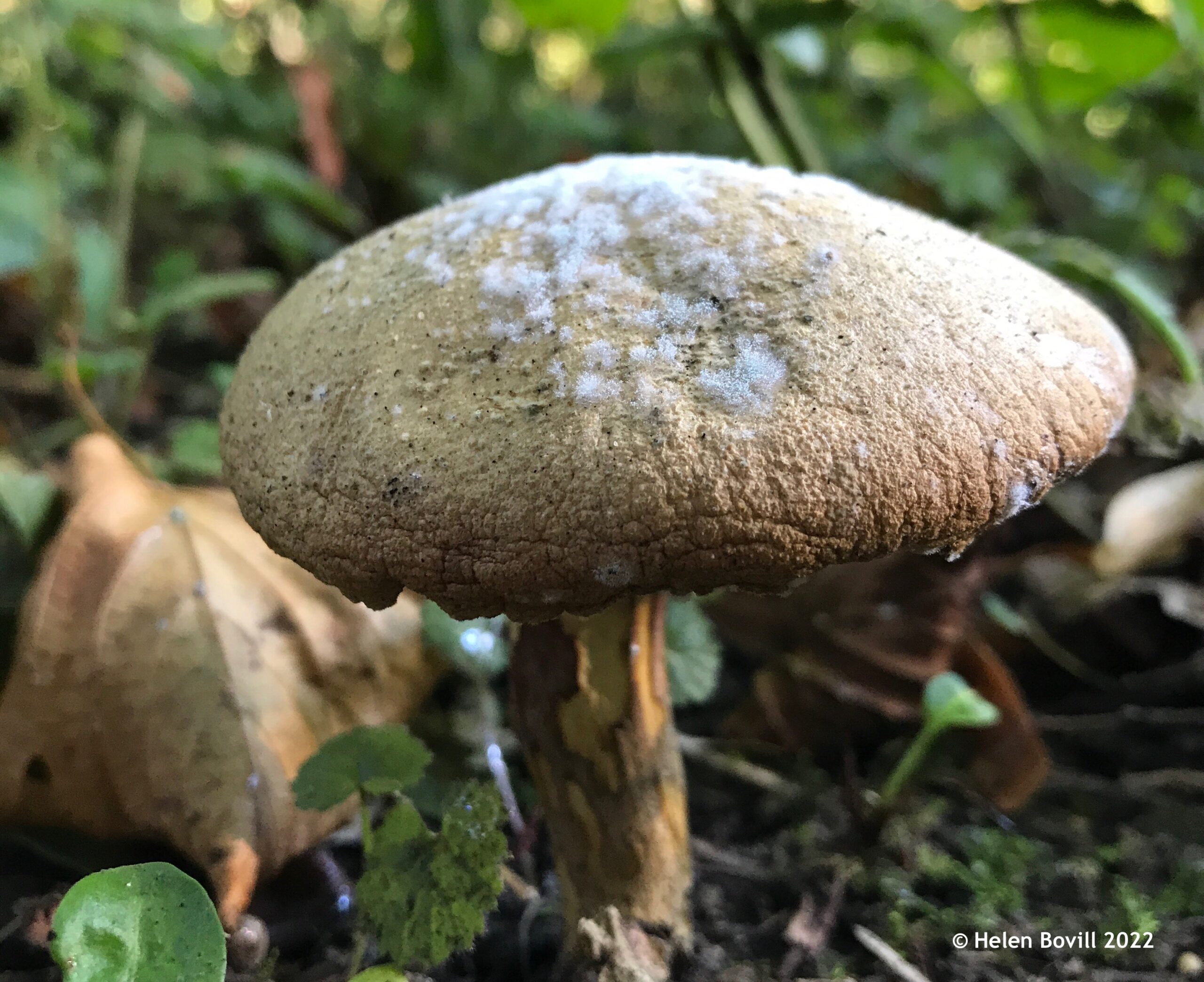
There are some tiny Inkcaps growing along some of the paths, and jelly-like fungus on some fallen trees.
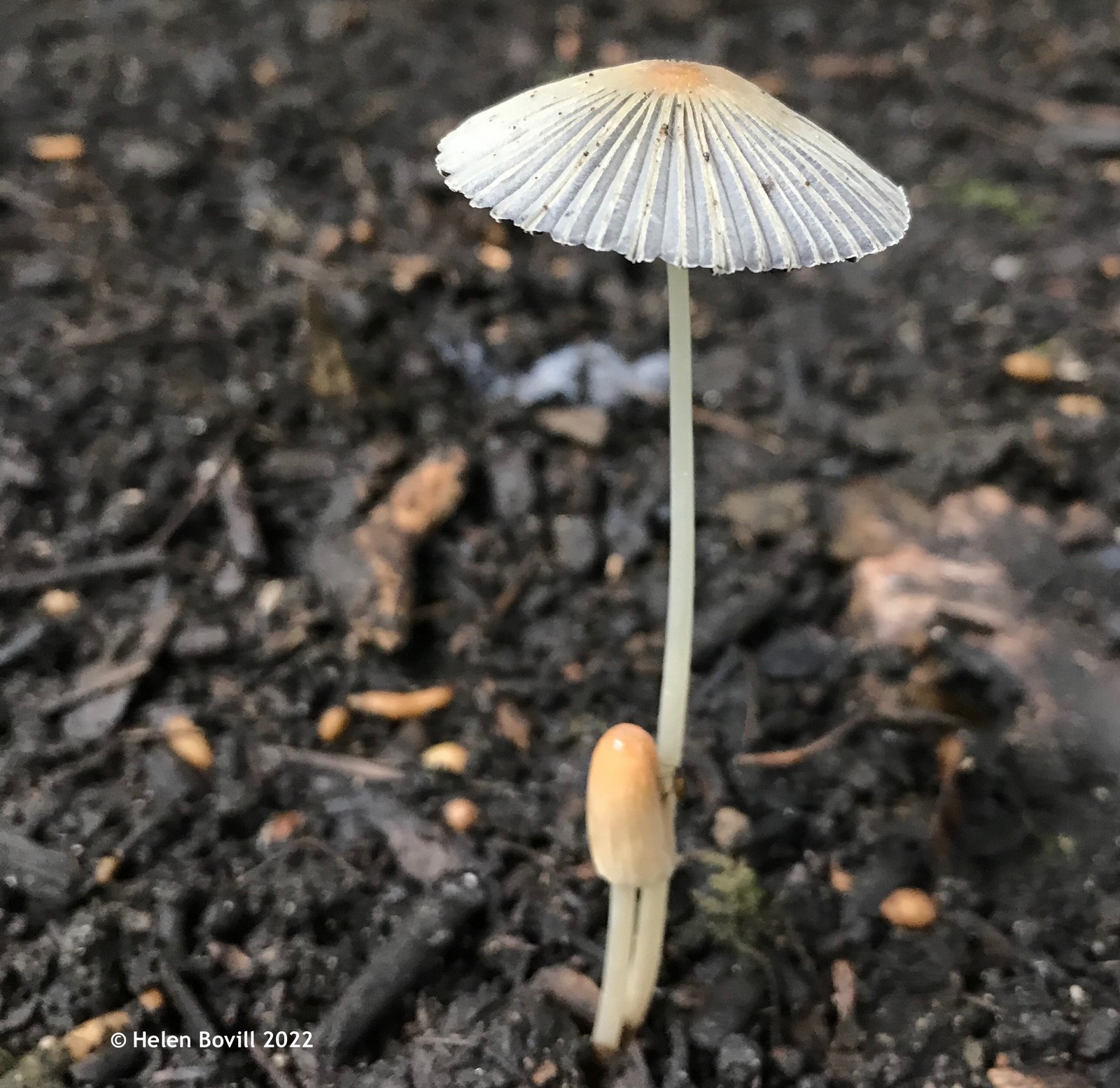
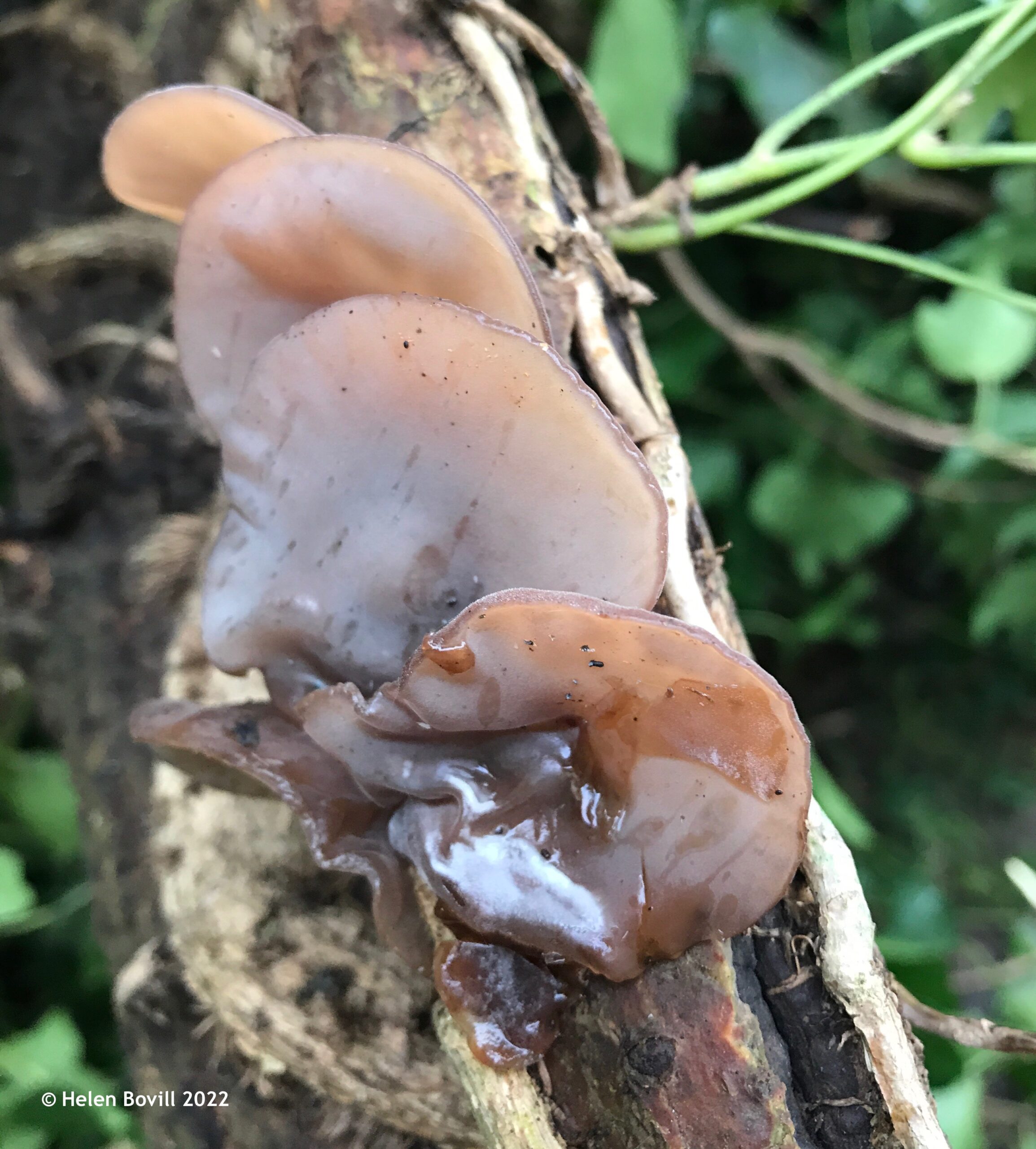
Conclusion
The only significant rainfall was early in the month. Since then, it has been cool and the footpaths are dry again, making an early Autumn stroll around the cemetery easy. Do pop in there and look at the cemetery wildlife – you might spot something I haven’t noticed yet!
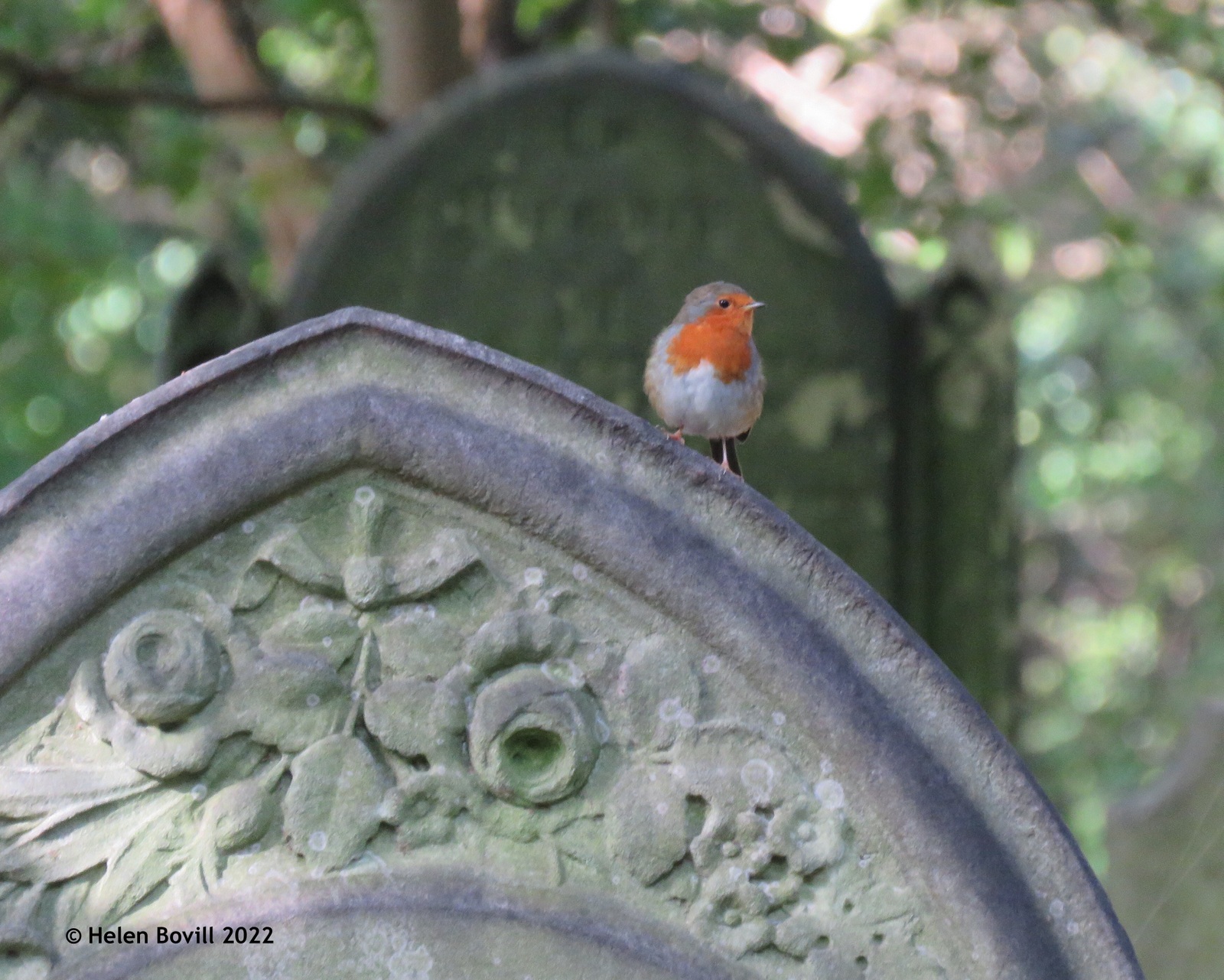
Link to further information about fungi –
https://www.woodlandtrust.org.uk/trees-woods-and-wildlife/fungi-and-lichens/


Thanks for keeping us all updated about all of the flora and fauna that we share the cemetery with Helen.